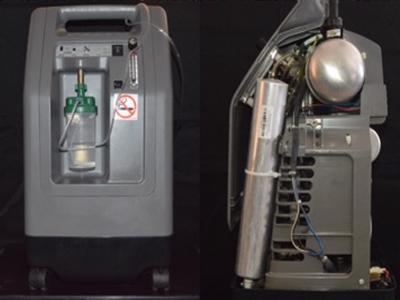Oxygen is an essential element of basic emergency care and is required for surgery and the treatment of several respiratory diseases, both chronic and acute. Reasons for low oxygen availability in developing countries are often associated with cost and lack of infrastructure to install and maintain reliable oxygen supply. Even where oxygen supplies are available, patient access may be limited due to missing accessories, inadequate electricity and/or shortage of trained staff. Oxygen concentrators are a suitable and cost-effective solution for the administration of oxygen therapy, especially where cylinders and piped oxygen systems are inappropriate or unavailable. The advantages of oxygen concentrators have been discussed in the technical literature; they include high reliability and low cost compared with oxygen cylinders and piped oxygen supply systems.
An oxygen concentrator consists of two adsorption columns, a compressor, and several valves to control the pressure cycling and flow sequence of atmospheric air fed to the system.
The adsorption column packed with zeolite adsorbent selectively adsorbs nitrogen over oxygen in the air and delivers high purity oxygen to the patient. The captured nitrogen is desorbed from the bed by lowering the pressure. The adsorption columns and the compressor are the two principal contributing factors to the size and weight of the device. The main issues for size and weight reduction are size reduction of the ad- sorption column and the compressor. Generally, a pair of sieve beds must be changed every 18-24 months, but in cases of intense use (12-18 hours per day), a replacement of the beds after 12-16 months is required. Efficient operation of a PSA process is necessary in order to utilize the capacity of the adsorbent as much as possible and reduce the power requirements of the process. This project describes the re-designing of the sieve beds, with particular attention to the fabrication of zeolite monolith structures in order to provide a structured framework to design and produce locally the spare parts of this device.

Medical tags
- Clinical need
- Support to medical practice
- Area
- Pneumology / chest medicine
- Technology
- Other supporting equipment
- Project keywords
- Oxygen, 3D printed zeolite, sieve beds, spare parts
- Device classification
- IIa